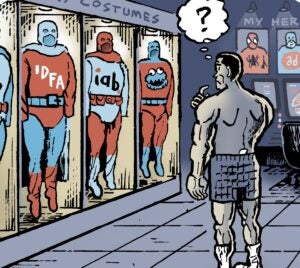Payam Zamani is CEO of Reply.com, a lead generation marketplace.
 AdExchanger.com: Reply.com started in lead generation. Why did you transition the business into an exchange and marketplace?
AdExchanger.com: Reply.com started in lead generation. Why did you transition the business into an exchange and marketplace?
PZ: Until the summer of 2006, Reply.com was focused on lead generation for the real estate and automotive markets. During that quarter, many of our largest real estate buyers informed us they were going to stop buying leads due to the slowdown in the market. We started discussing the tremendous innovation in paid search and display / traffic exchanges. However, lead generation had been around for over ten years and hadn’t evolved. The writing was on the wall: Lead Generation 1.0 was going to die and Lead Gen 2.0 would replace it. We had to rethink and revise our business model.
To give you some context, in a Lead Gen 1.0 model, a car dealer negotiates with a 3rd party lead provider for a fixed fee, price-per-lead, locked contract with no insight into lead quality. At the end of the month, some sources have a $300 cost of sale and some a $1,000, but lead quality at the time of purchase was unknown. If that dealership has too many cars on the lot, or is running a weekend special, there isn’t a way to segment and do more of what works and stop spending where it isn’t working. So more often than not, the dealership gets frustrated and quits the program.
We decided to protect our revenue base, but stopped growing it. Instead of continuing on an inefficient path, we went dark for 18 months. During that time, our engineering team built a lead exchange and marketplace. We formally launched in April of 2008; it has grown tremendously since.
In our marketplace, that same dealership in the Lead Gen 1.0 example now has access to Lead Gen 2.0 controls. We provide tight controls over price, quality, volume, radius, model, and auction-bidding. The dealership is now in control. As a result, we have found that our buyers are shifting offline dollars online because they can measure their return on investment, segment what works, and buy more of what is profitable.
Tell us a little about Enhanced Clicks™. What problem is Reply.com solving with this product?
After we launched the Lead Marketplace, we offered real estate buyers Lead Gen 2.0 controls. We heard that they weren’t buying leads, but they would consider buying clicks. Keep in mind, a click or lead customer is the same to Reply.com. One is just earlier in the conversion funnel.
One of our core competencies in online marketing is paid search. We immediately went back to our offices to discuss how to sell clicks. We researched the patent space and came up with the concept for Enhanced Clicks™.
An Enhanced Click™ (patent-pending) represents a consumer with intent to buy a product or service in a specific geography. Think of it as a “soft lead.”
We thought this was a revolutionary idea. Now the buyer doesn’t have to learn how to build a landing page with high quality score, become an expert in SEM, learn bid management, write text ads, decide keywords, or deliver banners. All they have to do is select a category, sub-category, define a location, and set a CPC. Then they will acquire ready-to-purchase consumers with perfect geo-targeting.
From our perspective, there are several problems with today’s paid search and display marketing solutions. They are not designed for locally-targeted advertising, and are too complicated, imprecise, and expensive.
By too complicated we mean that, to be effective with paid search or display, an advertiser needs a team of experts and a significant infrastructure investment. They need people on their team focused on creative optimization, bid management, keyword expansion, and landing page optimization.
By too imprecise, we mean that it is difficult to generate locally-targeted traffic in significant numbers. Most solutions today filter based on IP addresses. This solution results in significant waste, as IP addresses are right only about half the time.
By too expensive, we mean that existing platforms make local marketing almost cost-prohibitive because imprecise traffic drives up costs. Poorly-targeted local advertising offers no way to recover an investment.
Our solution is Reply.com’s Marketplace. It provides easy access to category-specific and locally-targeted Internet traffic. In five minutes, an advertiser can sign up, create a campaign for buying leads or Enhanced Clicks™, and start receiving traffic. Reply.com’s platform is designed to make gaining access to the local online consumer efficient and profitable.
Who are Reply.com’s customers, and what are your core categories?
Sample customers using our marketplace are: Hearst Newspapers, Ford, RealEstate.com, GM, ServiceMagic.com, Market Leader, Kia, QualitySmith, Quinstreet, Cars.com, Vertrue, Audi, and ZipRealty.
Our core categories are:
- Autos: New, Used, Special Finance
- Real Estate: Buy a Home, Sell a Home, Foreclosure, Mortgage
- Home Improvement: all major trades (Additions, Remodels, Painting, Cabinets, Roofing, Siding, Flooring, Windows, etc)
- Insurance: Auto, Home, Health, Life
We are launching new categories quarterly.
Looking at your clients, what trends do you see today with respect to verticals, metrics, and conversion goals?
We are transacting more than 300,000 leads per month and more than 500,000 Enhanced Clicks™. We have more than 3 million leads and 8.5 million Enhanced Clicks™ available monthly. Buyers of our Enhanced Click™ report that our conversion rate is 50%-100% better than search or display. We attribute that success to inserting a second step in the consumer’s experience where they are asked to confirm intent and location. This allows the advertiser to dynamically generate a landing page more unique to the consumer’s interest. Not only do we significantly reduce abandonment, but we also eliminate issues with geo-targeting.
Autos have been growing rapidly and the “Cash For Clunkers” program is helping create demand.
In Real Estate, foreclosures are still hot and growing. As the market starts to recover, we are well positioned to help advertisers and sellers take advantage of the efficiencies offered in an exchange.
We see the biggest growth in Home Improvement. The industry is highly fragmented, and the geo-restrictions are very high. We have signed up with most major buyers, and sells are quickly building liquidity.
How are lead exchanges playing out in your company’s strategy? Where do the publisher and advertiser have complete transparency into the transaction?
We have several thoughts on exchanges and how we define and participate in the exchange model. First, in most lead generation businesses, buyers establish a fixed radius around their business and try to only purchase leads closest to their business, as they feel they are the most serviceable and monetized. There are hundreds of thousands of quality leads that are unsold because there hasn’t been an exchange model. Furthermore, there are an equal number of undersold leads. Leads that can be sold three or more times are often sold only once.
The net result of this inefficiency is that lead sellers do not earn a premium for quality leads, have a limited incentive to improve quality, and have no reliable way to align lead generation efforts with lead demand. To the consumer, that means a high percentage of results to be contacted go unfulfilled.
Second, one of our core innovations is an exchange that delivers “margins for the advertiser,” not “yield for publishers.” The basic point is that search and display online marketing are not built for companies targeting local consumers. So we created an advertiser-side exchange where ad dollars can be recovered by selling poorly targeted, local advertising through the Reply! click exchange. In fact, Peter Burris, a Principal Analyst and Research Director at Forrester Research interviewed customers and called Reply!’s inventions “just plain smart.”
Lastly, transparency is overrated. To us, what matters is acquiring consumers who have intent to purchase in locations where you can service them and offering an opportunity to segment and bid based on propensity to convert.
As an example, we feel Google is one of the most opaque companies in online marketing. Ask anyone who invests in Google Paid Search these three questions, and see if you get consistent answers:
- What is keyword quality score and how do you improve it to lower your CPC’s?
- If you geo-target, how many clicks fall outside the requested geography?
- How much does cost increase and volume drop when you geo-target?
- How important is display advertising to lead gen and Reply.com specifically?
Display is a critical part of our acquisition portfolio. In fact, we have recently launched an ad network where publishers can run HTML widgets to directly generate Enhanced Clicks™. The feedback from publishers has been great. They tell us we offer a superior monetization platform and a smarter way to maximize eCPM’s for remnant inventory.
What’s your view on display ad exchanges? Are they useful?
If you are a publisher, they offer a reliable way to increase eCPM’s. If you are an advertiser, it depends on your acquisition process. Banners, PPC, and email all have problems with accurate geo-targeting that our platform helps to resolve.
We find it interesting that Google, Yahoo, and Microsoft are not focused on the $100 billion+ spent by local advertisers. That’s the market we are after. Our platform acts as a catalyst in bringing these dollars online. Our platform makes these advertisers online marketing-ready.
Is automation helping creative in your business? Or are the best landing pages still built by people?
We automate as much as possible. We have direct API access in and out of search engines. We use Marin Software for PPC bid management, DART for display management, and Google Website Optimizer for A/B and multivariate testing. We never stop testing and improving our conversion funnels.
If you ran an offline company that targets local advertisers, what steps would you take to prepare for a digital future?
Never let a good crisis go to waste. The shaken credit markets have created an uncertain future for local advertising and a massive opportunity for advertisers. Many newspapers are near bankruptcy, CPC’s and CPM’s have dropped, and the Googles and Craigslists of the world are poised to paralyze today’s incumbent local media channels.
Now is the time to invest and take control of locally-targeted advertising. Here are some important questions:
- Does branding matter or is profitable acquisition more important?
- While you may monetize banners and paid links, do you have a process to monetize leads?
- Running paid search is difficult and requires investments in personnel and technology. Do you have a self-service, easy-to-use platform to get local advertisers engaged in buying online clicks?
- Can you offer your advertisers a way to liquidate their poorly-targeted local advertising?
Reply.com offers the following solutions to help:
- A comprehensive, white-label cost-per-lead platform that can power a self-service solution across multiple vertical businesses
- An Enhanced Click™ self-service platform to bring more locally-targeted ad dollars online faster
- An advertiser-side exchange where ad dollars can be recovered by exchanging poorly-targeted, local advertising, which can encourage further investment in your other advertising platforms
- Syndication of Reply! widgets to maximize yield for remnant traffic
Follow AdExchanger.com (@adexchanger) on Twitter.













